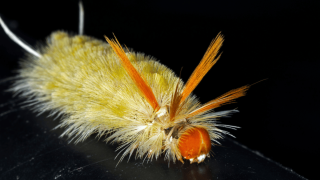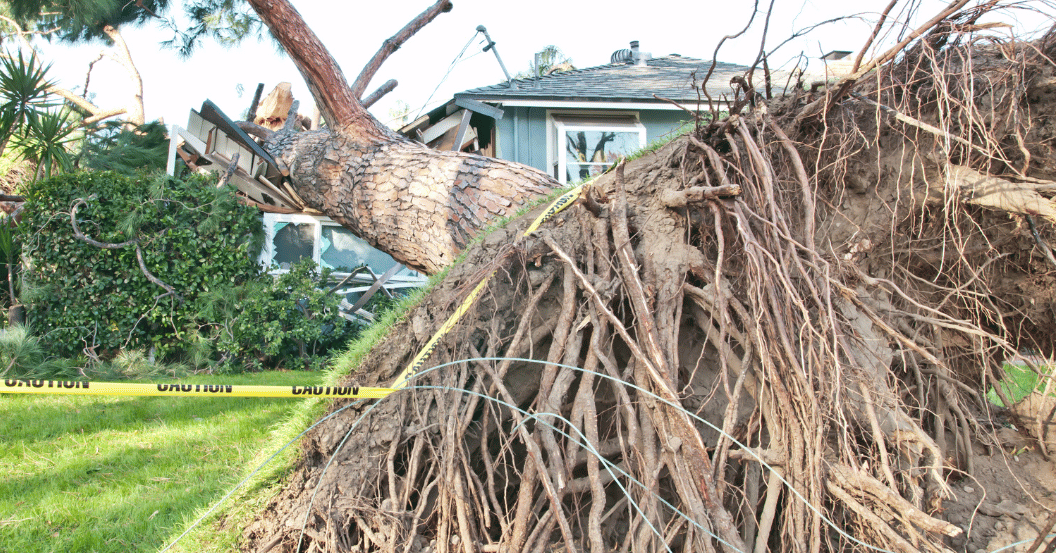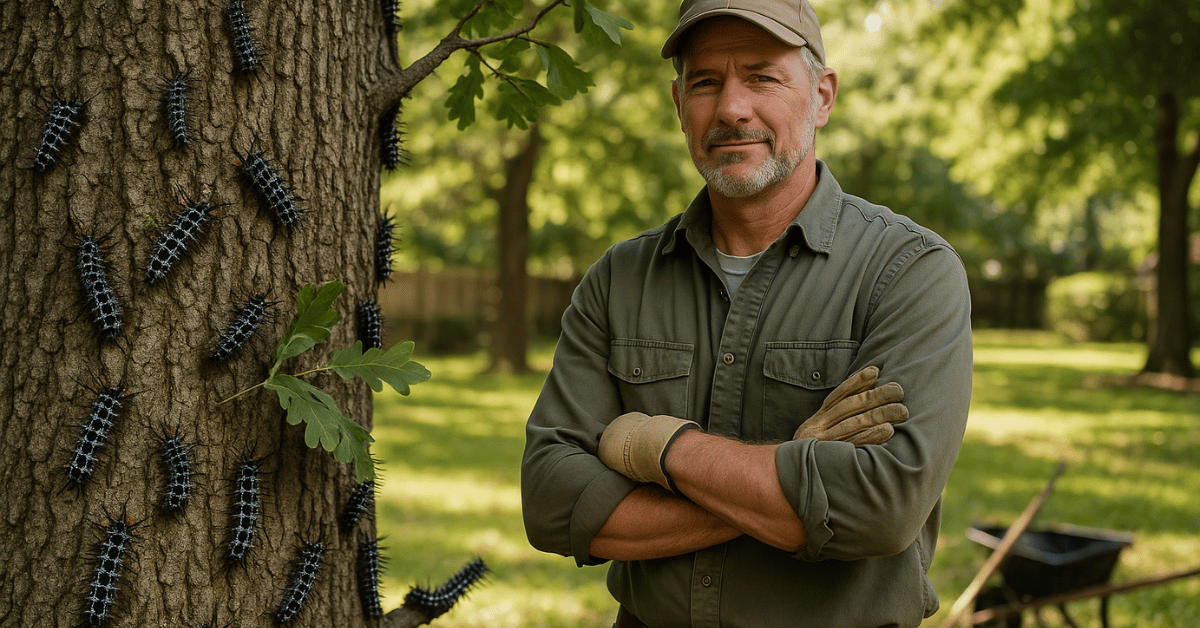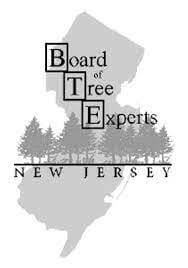If you’ve ever seen a fuzzy caterpillar with wild tufts of hair crawling across a tree trunk or porch screen, chances are you’ve met a tussock moth caterpillar. They look almost playful with their bright colors and fuzzy bodies, but they’re not something you want to brush against or let loose on your trees. Around here, we run into them often, and while they’re part of the natural world, they can cause headaches for homeowners.
What Tussock Moth Caterpillars Eat
Tussock moth caterpillars have a wide appetite, and their diet often leaves a mark on the landscapes where they live. They feed on woody plants like oaks and dogwoods, as well as shrubs and older plants that may already be stressed. They also go after blueberries and other fruiting plants, making them a concern for both homeowners and growers.
The milkweed tussock moth caterpillar, also known as Euchaetes egle, is often found on milkweed, where it shares space with monarch caterpillars. Beyond these well-known hosts, they eat many herbaceous plants and trees, moving from one food source to another as they grow. Their feeding habits can thin canopies, weaken plants, and leave shrubs and trees vulnerable to other problems later in the season.
Their Place in Nature
Tussock moth caterpillars belong to the family Erebidae in the subfamily Lymantriinae, and they play an important role in the web of life around us. They feed on a wide range of food plants, serving as larval hosts that connect trees and shrubs to a larger network of species. Both the hickory tussock moth caterpillar and the milkweed tussock moth caterpillar are part of this system, providing meals for predators despite their stinging hairs. Their cocoons often end up in leaf litter, where they add organic matter that strengthens the soil and supports countless other organisms. By linking plants, predators, and soil health, tussock moth caterpillars build ecosystem connections that remind us how even a single insect can influence the balance of nature.
Where Tussock Moth Caterpillars Live
Tussock moth caterpillars are found across most of North America. We see them here in the Mid-Atlantic, and they’re just as common up in Maine or down in Florida. They like wooded areas, but they don’t mind living in suburbs either. If you’ve got trees, they’ll find them.
They’re often drawn to porch lights at night, which is why you might find them on your screen door or outdoor furniture. Yard debris, like buckets of leaves, can also be hiding spots where they spin their cocoons.
How Tussock Moth Caterpillars Affect People
Here’s where tussock moth caterpillars become more than just a nuisance. Their tufts of hair can irritate your skin. Some people get a rash or itching after touching them. Kids and pets are especially at risk because they’re more likely to pick them up.
They also hurt landscapes. We get calls every year from homeowners who notice their oaks or ornamentals losing leaves fast. Blueberry growers and other farmers also see damage. One or two caterpillars are not a problem. Dozens or hundreds can stress trees to the point where disease and other pests take advantage.
How to Recognize Them
If you see a brightly colored caterpillar with wild hair sticking out in clumps, you’re probably looking at a tussock moth caterpillar.
The white-marked tussock moth is one of the most common. It has four little white hair brushes on its back and long black and white tufts at both ends. The hickory tussock moth is white with black spots and plenty of stinging hairs. The milkweed tussock moth is orange, black, and white and often found in groups.
They’re easy to spot once you know the look: bold colors, fuzzy tufts, and usually hanging out on leaves in groups.
Their Life Cycle
The life cycle of the tussock moth is a process that shows how connected these insects are to their environment. Belonging to the family Erebidae and the subfamily Lymantriinae, they begin as eggs laid in clusters on bark or leaves. When the eggs hatch, the tiny larvae feed in groups before spreading out.
Over time they grow into mature caterpillars, often seen on trees like the hickory tussock moth, and eventually drop into leaf litter or other sheltered spots where they spin their cocoons. Inside, the transformation continues until the moths emerge. In many species the females are flightless and remain near the cocoon, releasing pheromones that draw in males. Depending on the climate, one or more generations can occur each year, with warmer regions supporting more activity. Each stage, from eggs to emergence, ties directly into the survival of the species and the balance of the ecosystem.
What to Do About Them
If you find a handful of tussock moth caterpillars in your yard, you don’t need to panic. Birds and natural predators will often keep them in check. But if you notice heavy feeding or clusters on your trees, that’s the time to act.
You can prune branches with heavy infestations or remove egg clusters when you find them. Encouraging birds in your yard also helps. If the problem is larger, it’s best to call in professionals.
At Strobert Tree Services, we deal with tussock moth caterpillars every year. We can inspect your trees, prune if needed, and provide treatments that protect your landscape without harming the environment.
Most important, don’t touch them with your bare hands. Their hairs can cause an unpleasant rash. Leave the handling to those of us with the right gear and training.
Final Word
The tussock moth caterpillar is one of those creatures that’s both fascinating and frustrating. It connects to the ecosystem in important ways, but when numbers grow, it becomes a pest that harms trees and bothers people.
Knowing how to spot them and when to take action can save your landscape a lot of stress. And if you ever feel unsure, that’s where we come in.
At Strobert Tree Services, our certified arborists are here to help. From pruning to full tree care, we make sure your property stays safe and healthy. If tussock moth caterpillars are chewing on your trees, give us a call.











